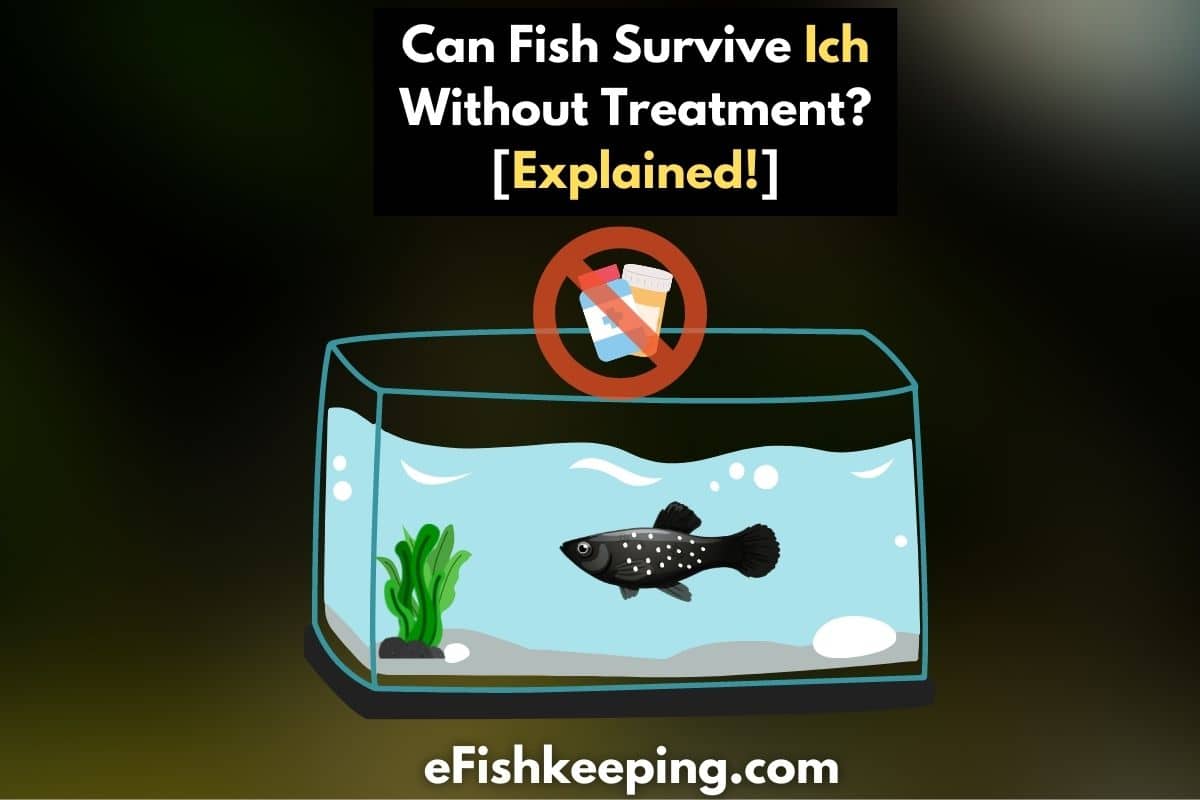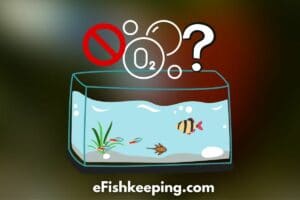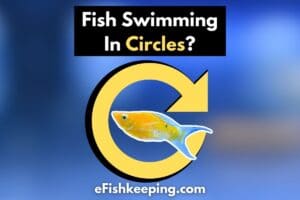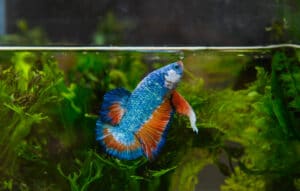One of the most effective and safest ways to treat Ich in your fish is to use the aquarium-safe ich medications. However, since you are here, you are likely more interested in curing your fish of Ich without any treatment.
I have been keeping fish for quite some time now. And though I haven’t experienced any Ich issues yet, I have done complete research for you. Being a fish keeper, I totally understand your situation. So don’t worry; let’s dive in together and explore the solution!
Can Fish Survive Ich Without Treatment?
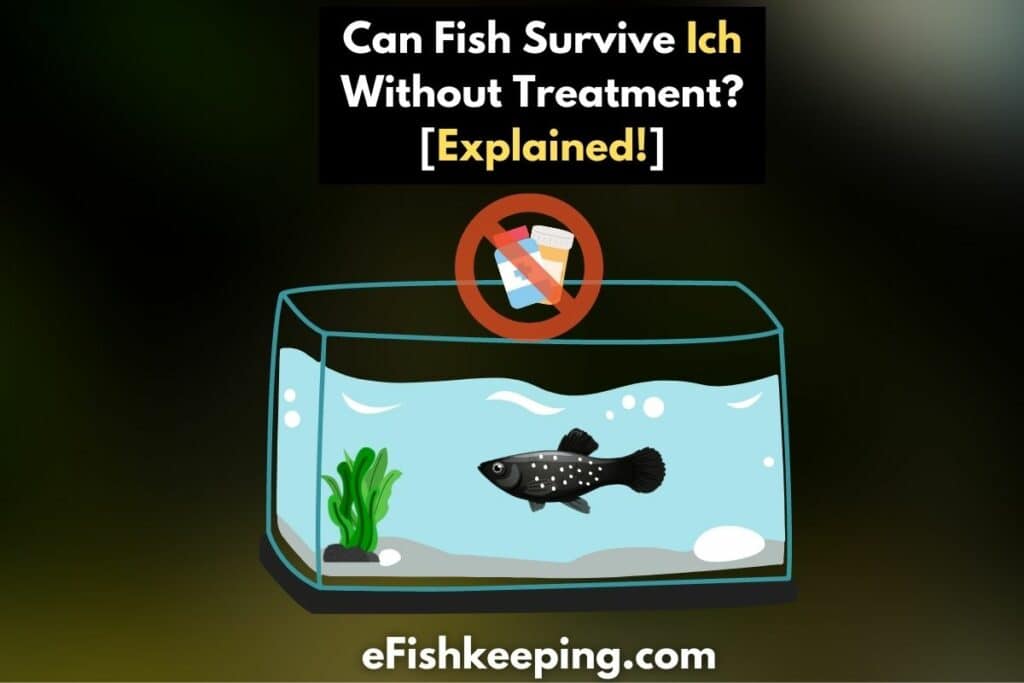
As a general rule, fish can survive from Ich even without treatment, and that is by using the heat curing method. Although getting rid of Ich using a higher temperature may be less effective than Ich medications, it is also one of the ways to get rid of Ich.
Ich is just a parasite caused by a protozoan. It penetrates the skin and gills of your fish, forming small white-colored spots on the body. It then multiplies and spreads to other fish quickly. Therefore, whenever you notice any Ich infestation in the tank, it is important to cure it.
Ich is a protozoan parasite that is generally transmitted into a pond. The transmission can happen by carrier fish, man, or other animals.
Here’s a chart that shows the different stages in the life cycle of Ich:
| Stage: | What Is It Called: |
|---|---|
| When the Ich adult leaves the infected fish: | Tomont |
| The tomont attaches itself to the pond bottom or any other surface, forming a thin-walled cyst. Inside it, the tomont undergoes division many times and forms: | Tomites |
| Tomites then come out of the cyst; they elongate and become: | Theronts |
| The Theronts penetrate the epithelium of the fish. After penetrating the fish: | Trophonts |
There are two methods when we talk about making the fish survive Ich without any treatment. One is by using the temperature, and another is by using salt in the water.
The tomonts and theronts stage of the Ich can’t survive in water when there is even more than a trace amount of salt. Moreover, temperature increases allow you to speed up the Ich’s life cycle, so ultimately, you can get rid of them faster.
| Temperature: | Notes: |
|---|---|
| At 85°F | Does Not Infect New Fish |
| At 86°F | Stops Reproducing |
| At 89.5°F | Ich Dies |
[Source]
Long story short (although there may be less probability), one can cure Ich without treatment.
How Can Fish Survive Ich Without Treatment?
There are different ways to deal with the Ich infestation in the tank:
Using The Heat Curing Method
- This method is generally practiced by experienced fish hobbyists and the ones who are not a big fan of using chemicals.
- In this method, you are required to gradually raise the temperature of your aquarium to nearly 85 degrees Fahrenheit (29.4 degrees Celsius) and keep it that way for up to 2 weeks.
- Yup, that’s it! But wait, you need to do some things in the meantime.
Caution: Ensure you properly research if your fish can tolerate the heat before using the heat method.
Having All The Necessary Equipment By Your Side:
As you may know, an inverse relationship exists between dissolved oxygen and temperature.
When water temperature increases, the dissolved oxygen level will decrease.
So to compensate for the lesser oxygen level in the tank, you will have to add more air stones (bubblers).
(In case you don’t know, an air stone/bubbler is a small device that helps oxygenate the tank.)
How to know you have less oxygen in your tank? The most common indication is that your fish will be gasping for air, coming to the top of the tank at the surface.
I recommend you to get some air stones now if you haven’t already. If you have a big tank, maybe 50 gallon+ then you will probably need 3 or more air stones in addition to the current setup. This is just a rough idea; decide based on the size of the tank you have.
And if you are about to get more air stones, you’ll also need more air pumps to support the sir stones. Air pumps are the device that actually provides the airflow to the air stones. Air stones then create surface agitation, and that is what helps in further oxygenating your tank.
It is not that you only need air stones; you can also use powerheads, wavemakers pointed upwards, or anything that can easily oxygenate your tank.
|
Images:
|
Items:
|
Links:
|

|
Air Stones
|
|

|
Air Pump
|
|

|
Powerhead
|
|

|
Wavemaker
|
Of course, you only need the ones that are enough to generate adequate oxygenation in your tank.
Also, is your current heater enough to heat the tank in all directions?
You need to raise the temperature of your whole tank. Possibly your current heater may not be enough. You can check out some of the best aquarium heaters here (on Amazon).
Once you have all the necessary equipment, it’s time to learn what to do in this process.
Properly Monitoring The Fish
Generally speaking, you should gradually raise the temperature by 1-2 degrees per day. After all, we must cure the fish of Ich and not boil them up!
While you raise the temperature, be sure to closely monitor your fish for any indication of distress or discomfort. If they happen to come to the surface, then that’s probably an indication you need more oxygenation in the tank.
If your fish are constantly gasping at the surface, undergoing rapid breathing, slowly reduce the temperature until they recover from it. And then try using other methods.
Also, heat resistance strains of Ich are getting common in the hobby, which further makes the heat curing method less effective.
I highly recommend you to watch this video in which the video host shares his thoughts on heat treatment for Ich:
Using The Salt Curing Method
Another method to cure Ich is to use aquarium salt or uniodized salt. I know it may sound like a treatment method, but since we won’t be using any chemicals or medications, so thought of including this as well.
Caution: There’s a big catch with this method, though. There are certain species of aquarium fish that are sensitive to salt. For example, scaleless fish cannot tolerate much salt since they don’t have the scales that provide the barrier.
So make sure you research your fish before you use the salt method. Usually, corydoras catfish are considered to be sensitive to salt. And suggested usage of salt for this type of species is 1 level teaspoon per gallon of water (which turns out to be 0.1% salinity).
Another case where salt usage may not be suitable for you is when you have a planted tank with live plants. Your plants can also be damaged even with a low salt dosage.
So ruling out the above-mentioned cases, you can try the salt curing method.
- In general, to treat Ich with salt, follow this ratio: 1 tablespoon per 5 gallons.
- To avoid any stress on the fish, you can dissolve a small amount of salt in water and add that solution to the tank. You can add the salt solution gradually over a 24-hour time period until you can complete the dosage.
- In the meanwhile, be sure to monitor your fish properly. If they show any kind of discomfort, stop using this method.
- So whenever you do a water change, you can add 1 tablespoon of salt per 5 gallons of water changed. (Do this type of treatment to only the replacement water and not to the whole tank)
What salt to use for treating Ich? Ideally, you should use aquarium salt for your freshwater aquarium. It helps cure Ich and also ensures the overall well-being of your tank.
Can I use table salt to treat Ich? Yes, you can, but only if it is not iodized and additive-free.
Usually, rock and kosher salts are better alternatives to aquarium salt. Both these salts are pure, natural, and free of additives.
I highly recommend you check out my guide about which salt to use in your aquariums if you need further information on this topic.
Another method exists in which you use both heat and salt to get rid of Ich. You can also practice that if your conditions permit.
Note: No matter what method you choose to cure Ich, be sure to gravel vac your aquarium quite often (roughly every few days) to get rid of the incubating parasites.
Ich roughly needs from less than 4 days (at temperatures higher than 75 degrees F or 24 degrees C) to more than 5 weeks (at temperatures lower than 45 degrees F or 7 degrees C) in order to complete its life cycle.
What Causes Ich In Fish?
Ich is so widespread that it is usually believed to be present in most of the aquariums (specifically in rearing ponds of breeders, large holding tanks, wholesalers, and collectors).
To better give you the analogy, you can consider it like the common cold in us humans.
When we are tired or stressed, we often tend to become sick. And the main culprit for that is our weak immune system.
Similar is the case with fish. When fish are under stress, their immune system is suppressed. And that becomes the perfect opportunity for all things to get into their body.
So, although indirectly, stress does contribute towards the susceptibility of Ich infection in your fish.
Almost every aquarium fish is likely to get in contact with the protozoan in many instances in their lifetime. It is so prevalent that most fish have also developed a good immune response against the disease.
If your fish are strong and healthy, they are less likely to get caught by this disease.
Another factor and perhaps the most common cause of Ich spread up in the fish is adding new fish without quarantining them.
Fish can act as carriers and may carry dormant Ich stages. They may not show any symptoms until you introduce them to your tank.
And not only fish, the other new aquarium equipment and even plants can carry Ich with them. (Because Ich can come in on any surface that was infected in the tank.)
Hence, it becomes essential to properly sanitize any new aquarium equipment you use or add to your aquarium.
If it’s a live fish or plant, quarantining it before adding it to the main tank is important to avoid spreading any disease!
How To Prevent Ich In My Tank Again?
Here are some of the prevention tips you can follow to avoid the Ich issues in your tank again:
#1. Quarantine New Fish And Plants
Get a separate quarantine tank if you don’t have one. For example, you can get a small fish tank like this one (on Amazon) and use it as a separate quarantine tank for every new fish or plant you buy.
The store-bought fish can often carry disease. So keep it in the quarantine tank for 2-4 weeks. For quarantining new aquarium plants, you can keep them for at least 5-6 days.
#2. Reduce Stress
Try to reduce the stress in your fish. Stress is generally caused in fish due to factors like poorly maintained water, improper tankmates, not having enough hiding places, etc. So the best way to prevent Ich is to reduce all the causes of stress in the fish.
#3. Purchase Plants Only From Aquariums Without Fish
Lastly, a smart way to prevent Ich is to buy plants from shops where the plants are only kept in the tanks without fish.
In the theronts stage of the Ich, it swims to a fish host and penetrates its epithelium.
However, if they cannot find a host within a day or two, they usually die. This actually makes Ich an obligate parasite, which in other words, means they must have a fish host to survive. So in aquariums with no fish, there are very few chances of Ich survival.
Final Words
In short, fish can survive from Ich without any medication treatment using heat and salt methods. Although efficacy may be less, it is still doable. So that’s it! I hope you found this guide helpful.
Hi! I’m Praveen Ghoshal, the founder of eFishkeeping.com. Inspired by my Dad, I got interested in fishkeeping when I was a kid. Since then, I have been involved with this hobby. Currently, I have 3 fish tanks at our home, and I enjoy this hobby with my full family. Read more about me here.

